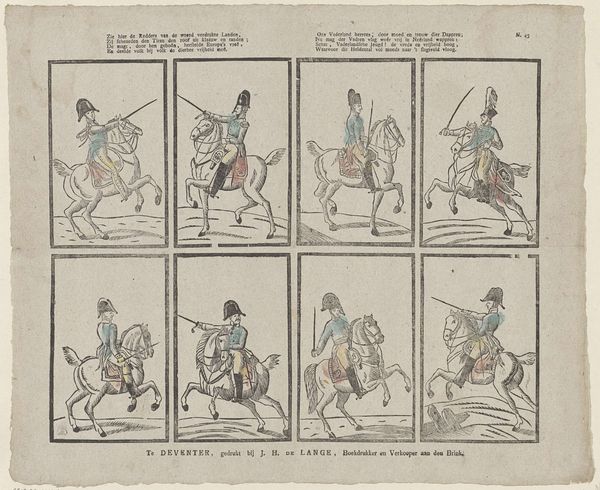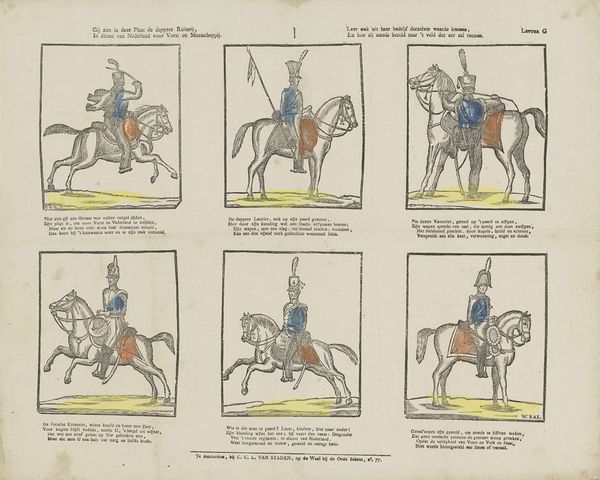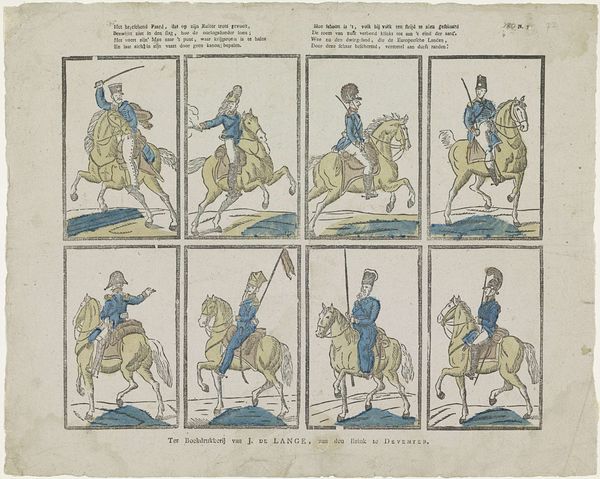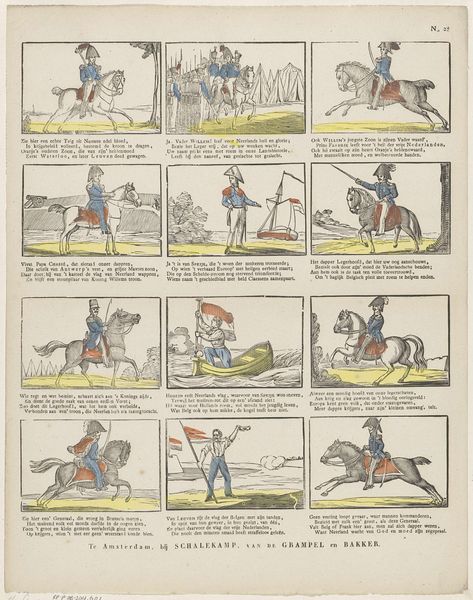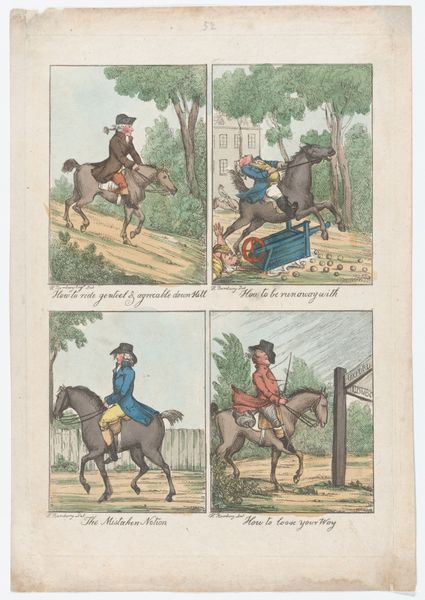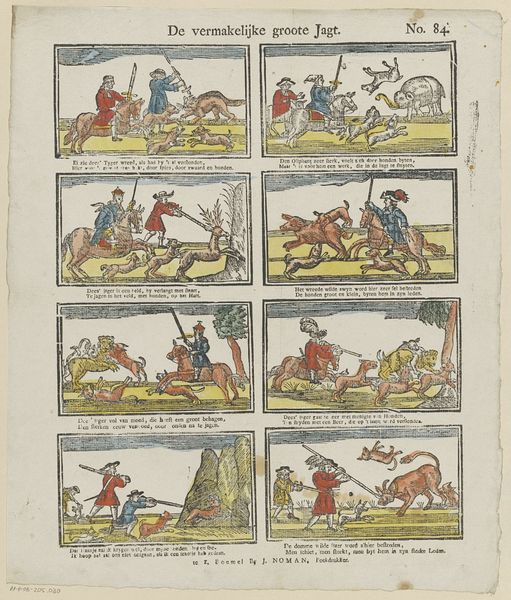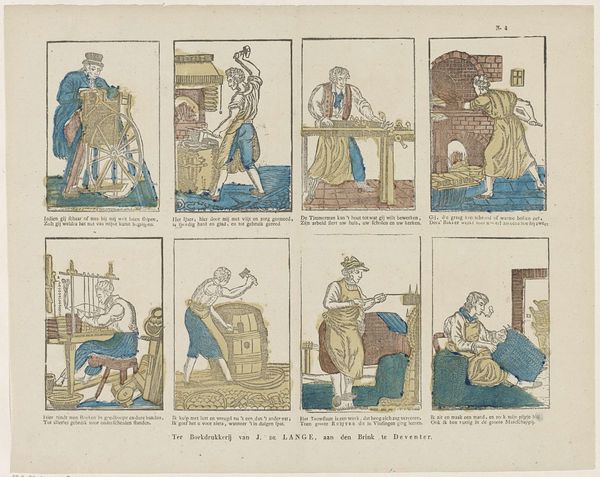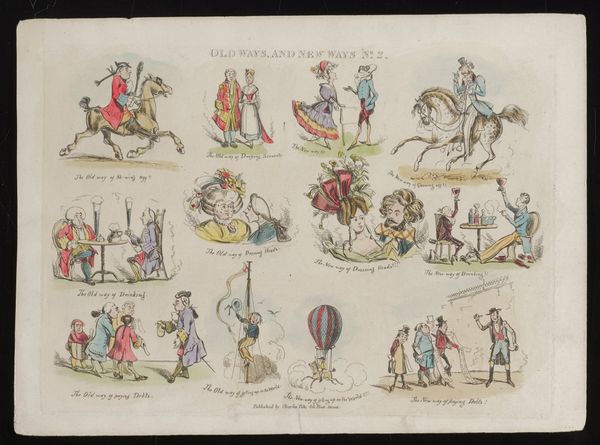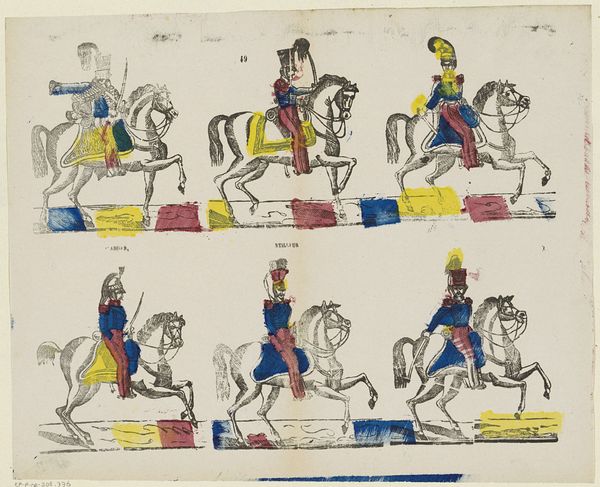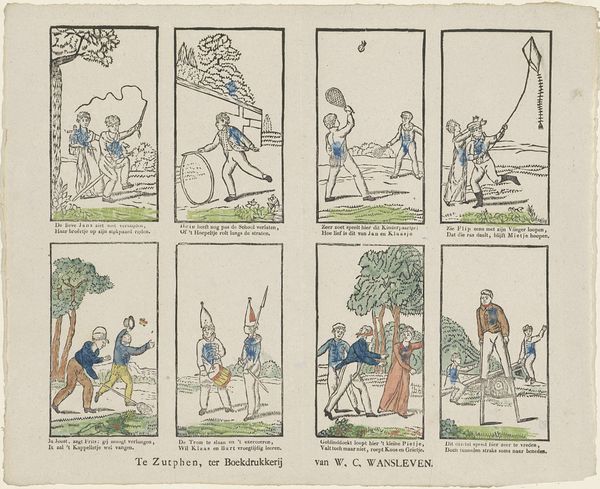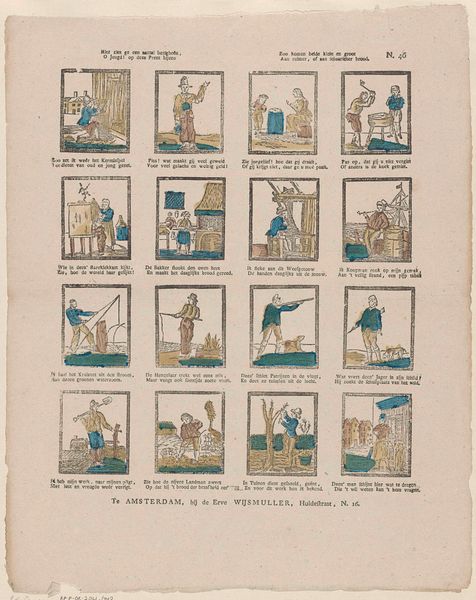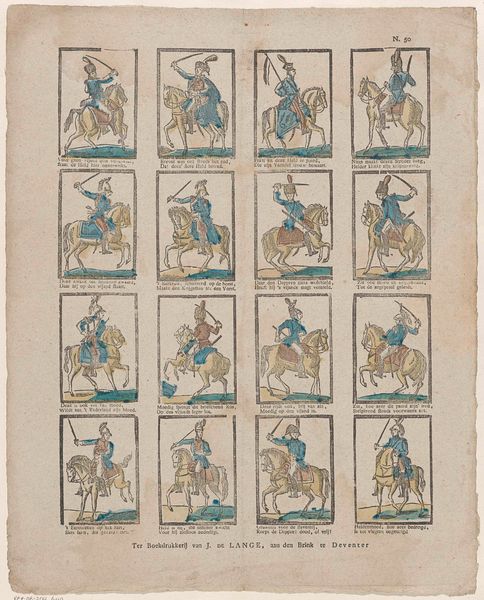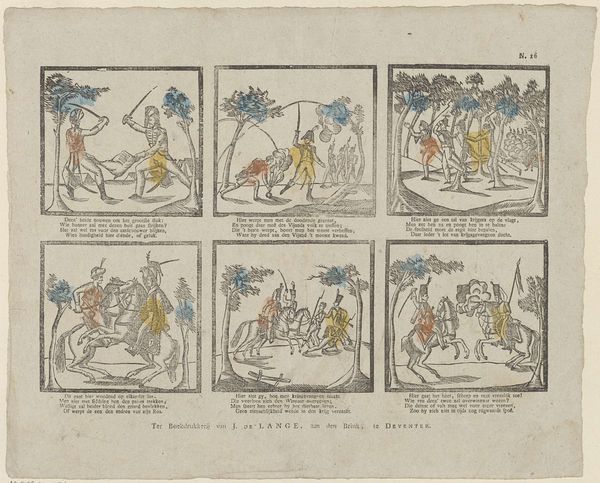
Kom jongens! kijk eens hier, wilt gij op paardjes rijden, / Leer dan ook op het paard, voor 't vaderland te strijden 1806 - 1858
0:00
0:00
drawing, print, engraving
#
drawing
#
dutch-golden-age
# print
#
caricature
#
romanticism
#
genre-painting
#
history-painting
#
engraving
Dimensions: height 342 mm, width 424 mm
Copyright: Rijks Museum: Open Domain
Editor: This engraving by Willem Carl Wansleven, titled "Kom jongens! kijk eens hier, wilt gij op paardjes rijden, / Leer dan ook op het paard, voor 't vaderland te strijden" from sometime between 1806 and 1858, seems to depict various military figures on horseback. The figures look somewhat comical. What stands out to you about this print? Curator: Considering Wansleven's methods of production – engraving, printmaking – we should be focusing on how this imagery functions within the context of its distribution. These prints weren't conceived as singular art objects hanging on a gallery wall, but as easily disseminated material, hinting at consumption and social reach. What was the impact of the materials used? Was printmaking easily accesible? Editor: That's a fascinating point. I hadn’t really thought about it like that before. Do you mean it’s more about the print's role as propaganda or social commentary through mass production rather than purely its aesthetic qualities? The fact that they were prints makes it accessible, and reproducible. Curator: Exactly. What type of labor went into creating those images? Consider the materiality of the print itself - the paper, the ink. How do these readily available components contribute to a sense of national identity when circulated? In a sense it democratises access to such depictions of power, don't you think? Editor: I see your point. I guess I was initially drawn to the caricatures themselves, but thinking about it as a product of its time, made for wide circulation, it makes a stronger statement about social values and nationhood. Curator: Precisely. Examining the methods and context shifts our understanding beyond simply aesthetic taste, allowing us to explore deeper societal values related to the object's making and consumption. Editor: Thanks, I definitely learned a lot. It is fascinating how this approach changes the interpretation.
Comments
No comments
Be the first to comment and join the conversation on the ultimate creative platform.
